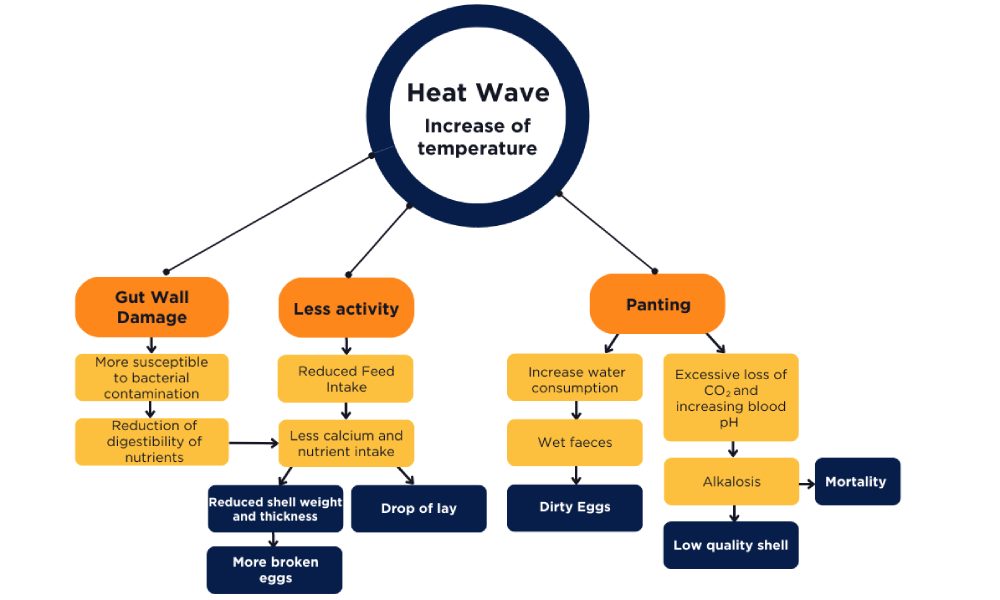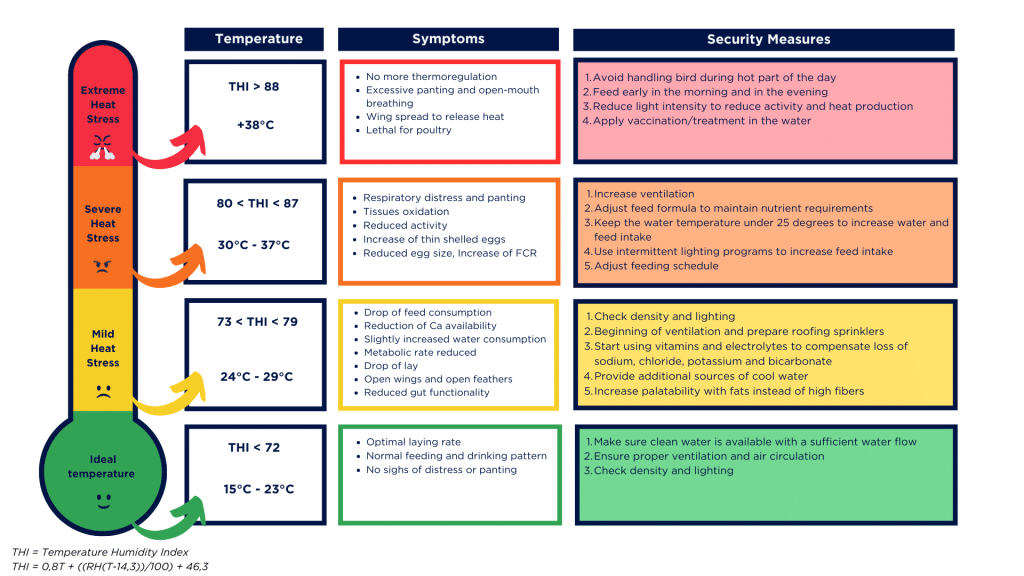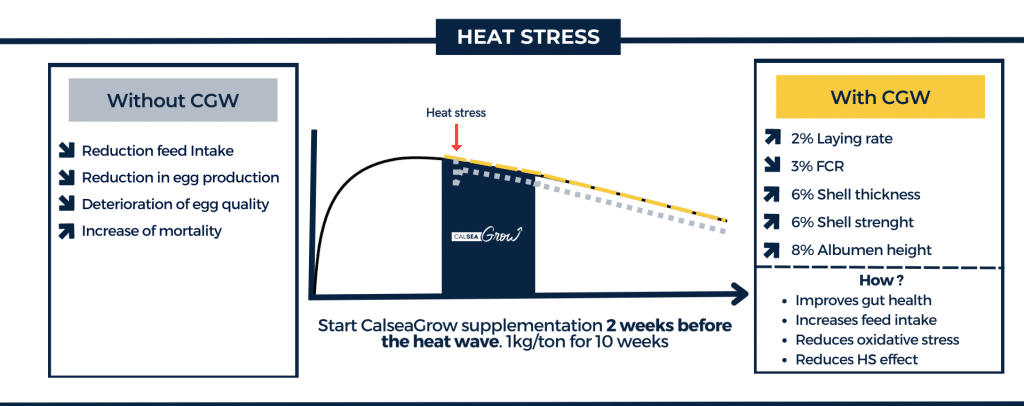What is heat stress in poultry ?
What are the consequences of heat stress in poultry ?

Figure 1. Mulder’s Chart (or Wheel) – Complex minerals interaction
How can we support animals and maintain their natural physiological processes during heat stress ?

Figure 2 – Heat stress: symptoms and security measures
These security and prevention measures are the first steps to reduce the impact of the heat stress (Wasti, 2020).
The strategy to avoid maximum issues caused by heat stress should be a combination of:
- Management measures: proper density and lighting, implementation of ventilation systems and roofing sprinklers, monitorization of feed and water intake and control of the water supply and its temperature.
- Formulation assessment: good balance and digestibility of the diet, calcium incorporation rate and form. For example, the addition of fat instead of carbohydrates in the formulation may reduce the production of heat and increase palatability.
- Time adjustment: feeding at the cooler time of the day is ideal to optimize the feed intake. Manipulation of the poultries should also be during those hours.
How CALSEAGROW can help poultry under heat stress condition ?
To mitigate heat stress, Phosphea created a unique blend of Peptic-oligosaccharides prebiotics and antioxidants specifically designed for layers and breeders. Due to its specific synergy between marine calcium and citrus extract, CALSEAGROW provides prebiotic (POS) and antioxidant properties to the bird leading to better calcium mobilization for the bones and eggshell and control of oxidative stress caused by Heat Stress. By incorporating CALSEAGROW at 1kg/ton of feed into their diet it is possible to enhance calcium deposition in both bones and eggshell increasing the shell quality of the egg.
Additionally, this innovative approach reduces the oxidative stress, improves feed intake during stress by increasing the nutrient absorption. It maintains and promotes gut health, which contribute to sustain egg production.
Our recommendation is: Supplement CALSEAGROW 2 weeks before the heat wave, in order to help counteract the negative effects of heat stress.

Figure 3 – How to use CALSEAGROW during Heat Stress